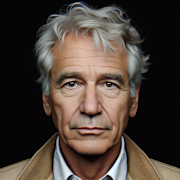The Thin Red Line (1998)

In 1998, Director Terrence Malick gave audiences a stunning visual and emotional experience with the release of “The Thin Red Line”. This war epic tells the story of the Battle of Guadalcanal during World War II and explores themes of good versus evil, nature versus man, and the complexity of the human experience in times of conflict. Let’s take a closer look at why “The Thin Red Line” continues to captivate viewers more than two decades after its release.
Cast and Characters
One of the standout features of “The Thin Red Line” is its ensemble cast, which includes some of the biggest names in Hollywood at the time. The film features performances from Sean Penn, Jim Caviezel, Nick Nolte, Adrien Brody, John Cusack, and many others. Each actor brings a unique perspective to their character, adding depth and complexity to the overall narrative.
Particularly memorable is Jim Caviezel’s portrayal of Private Witt, a soldier who grapples with the brutality of war while finding moments of beauty and peace in the midst of chaos. Nick Nolte delivers a powerful performance as Colonel Tall, a man consumed by ambition and power, willing to sacrifice anything for victory. These performances, along with the rest of the cast, help to elevate “The Thin Red Line” to a truly unforgettable cinematic experience.
Visual and Cinematic Excellence
From the sweeping shots of the lush landscapes of Guadalcanal to the intense and chaotic battle scenes, “The Thin Red Line” is a visual masterpiece. Director Terrence Malick is known for his stunning imagery and poetic storytelling, and in this film, he masterfully captures the beauty and brutality of war.
The cinematography, done by the legendary John Toll, is nothing short of breathtaking. Each frame is meticulously composed, drawing the audience into the emotional core of the film. The use of natural light and the juxtaposition of the serenity of nature with the violence of war create a sense of unease and wonder that lingers long after the credits roll.
Themes and Symbolism
At its core, “The Thin Red Line” is a meditation on the nature of war and humanity. The film explores the duality of man, showing both the capacity for great evil and the desire for redemption and connection. Through the eyes of various characters, we see the impact of war on the soul, the struggle for survival, and the search for meaning in a chaotic world.
Nature plays a significant role in the symbolism of the film, with the lush landscapes of Guadalcanal serving as a stark contrast to the destruction wrought by war. The Thin Red Line itself becomes a metaphor for the fragile line between life and death, hope and despair, as the soldiers navigate the harsh realities of combat.
Critical Reception and Legacy
Upon its release, “The Thin Red Line” received critical acclaim for its ambitious storytelling, stunning visuals, and powerful performances. While it may not have been a box office success, the film has since garnered a cult following and is now considered a classic of the war film genre.
“The Thin Red Line” has had a lasting impact on audiences and filmmakers alike, influencing the way war stories are told on screen. Its philosophical approach to the subject matter and its emphasis on the human experience set it apart from other films in the genre, making it a timeless and thought-provoking piece of cinema.
Conclusion
“The Thin Red Line” is a film that demands multiple viewings to truly appreciate its depth and beauty. With its stellar cast, stunning cinematography, and profound themes, this war epic continues to resonate with audiences and critics alike. Whether you’re a fan of war films or simply appreciate great storytelling, “The Thin Red Line” is a must-watch masterpiece that stands the test of time.

Desmond van der Walt
Journalist
More From Classics Authority Movies

Movie
Breaking the Mold: Classic Films That Subverted Genre Expectations

Movie
The Adventurous World of Classic Swashbuckling Films

Movie
Tokyo Story (1953)

Movie
The Political Impact of Classic Films: Speaking Truth to Power

Movie
The Wages of Fear (1953)

Movie
Behind the Scenes of Classic Movie Sets: Unforgettable Locations





